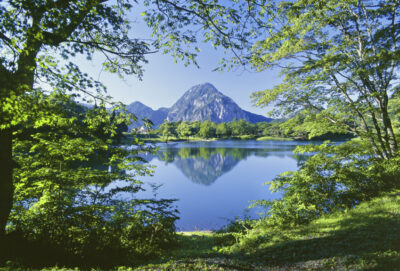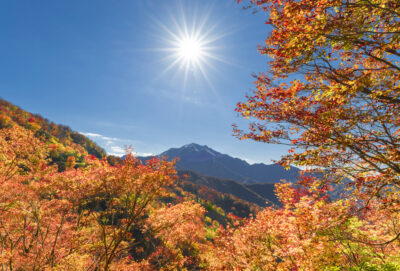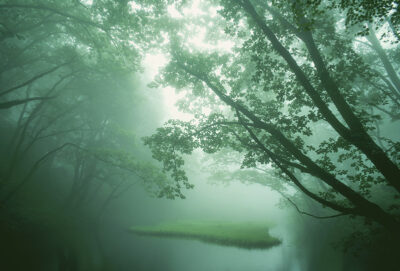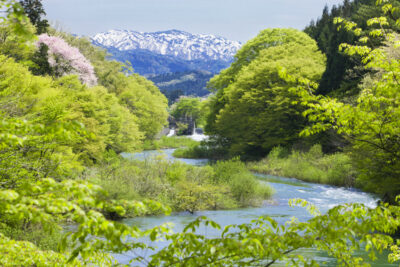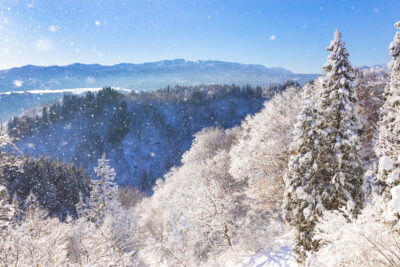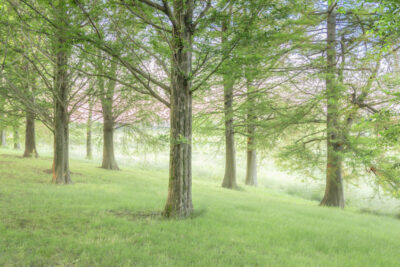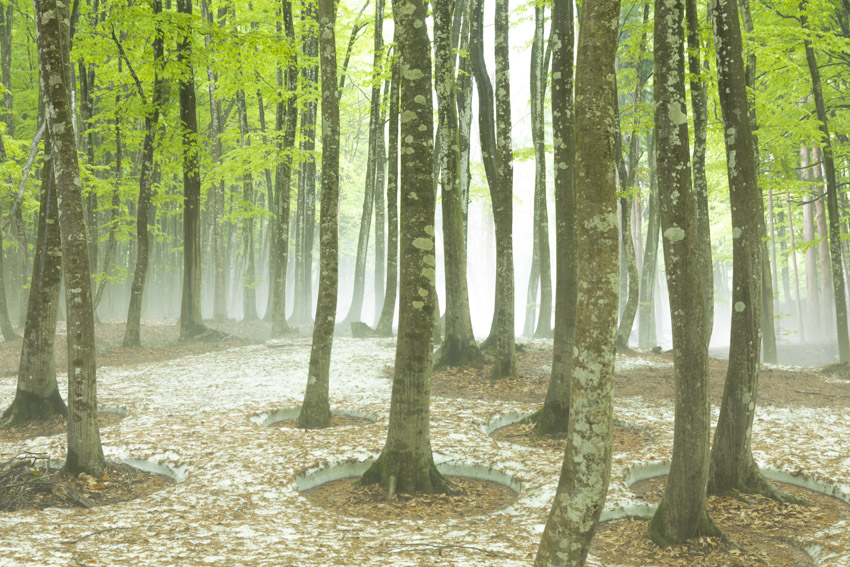
美人林
4月末、遅い春を迎えた松之山の美人林では、残雪にたなびく霧が幻想的な雰囲気を醸し出していました。新潟には、このように整ったブナ林がいくつか存在しますが、美人林は特に有名です。同じ時期に植えられたため樹木の大きさが揃い、また、傾斜が緩やかなため根曲がりもなく、まっすぐに伸びた美しい姿が特徴です。その名はこうした整った成長ぶりに由来しているのでしょう。
観光客やカメラマンが多く訪れる様子を見ると、魅力的な名前をつけることが人を惹きつける上でいかに大切かを実感します。美人林は決して広大ではありませんが、アクセスの良さも人気の理由でしょう。日本人は「整っていてコンパクトにまとまっていること」に美しさを感じるのかもしれません。
一方で、多くの人が訪れることで林床が傷み、踏み固められてしまうことで枯れてしまう木もあると聞きます。新潟には他にもブナ林はたくさんありますが、美人林はその代表として、観光の負担を一手に引き受けている場所なのだと感じます。
At the end of April, when late spring arrived in Matsunoyama’s Bijin-no-Mori (Beautiful Forest), the mist drifting over the remaining snow created a fantastical atmosphere. There are several well-maintained beech forests in Niigata, but Bijin-no-Mori is particularly famous. The trees were planted at the same time, so they are all the same size, and because the slope is gentle, there are no bent roots, and they grow straight and beautiful. The name probably comes from this well-maintained growth.
Seeing the many tourists and photographers who visit the forest, one realizes how important it is to give something an appealing name to attract people. The Bijin Forest is not particularly large, but its accessibility is likely another reason for its popularity. Perhaps Japanese people find beauty in things that are well-organized and compact.
On the other hand, I have heard that the forest floor is damaged by the large number of visitors, and some trees die due to being trampled. While there are many other beech forests in Niigata, the Beauty Forest stands out as a representative example, bearing the brunt of the tourist burden.
EOS5DMarkⅣ 62mm 1.3秒 f:10
©️photo by Nakamura Osamu
